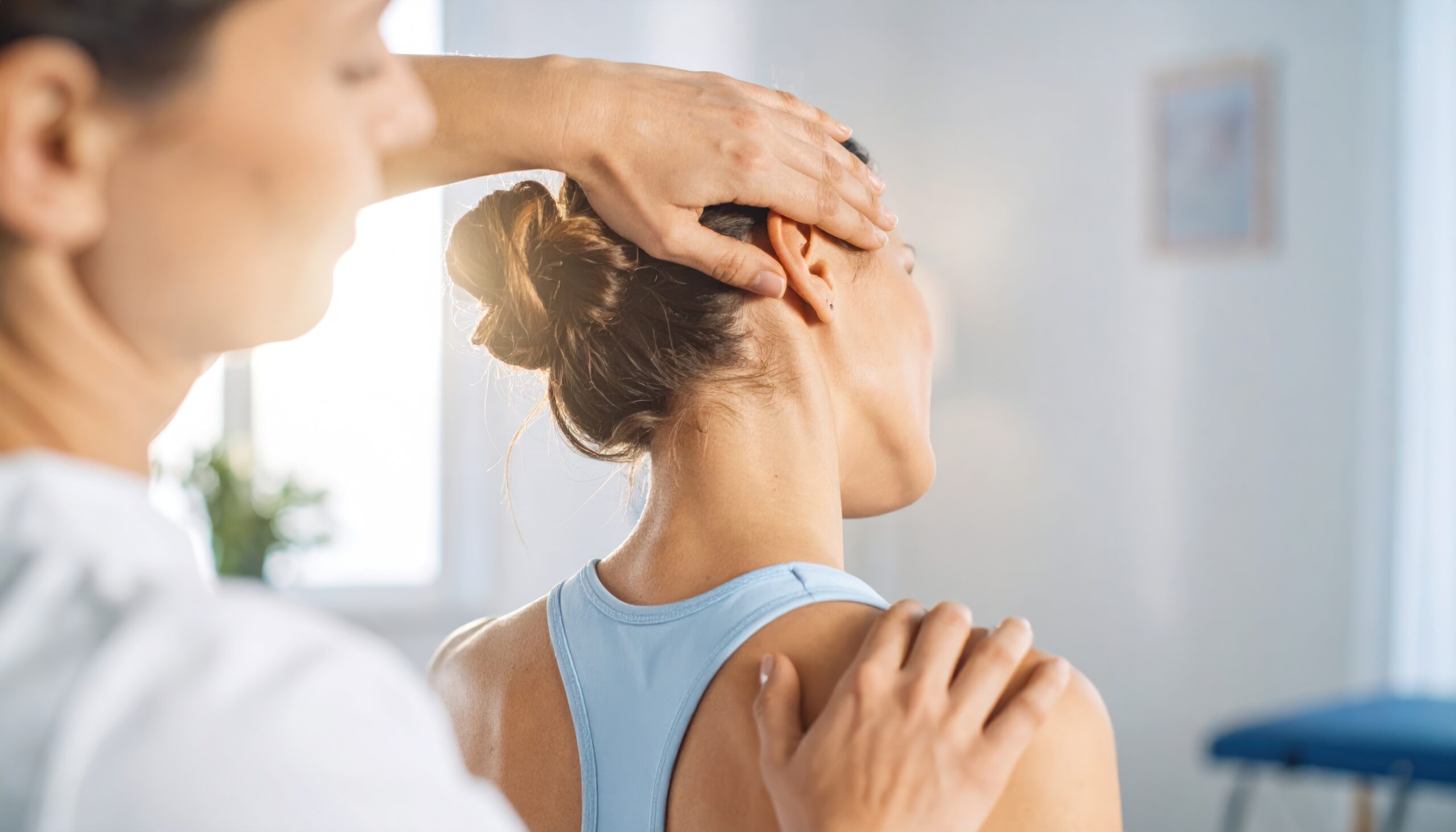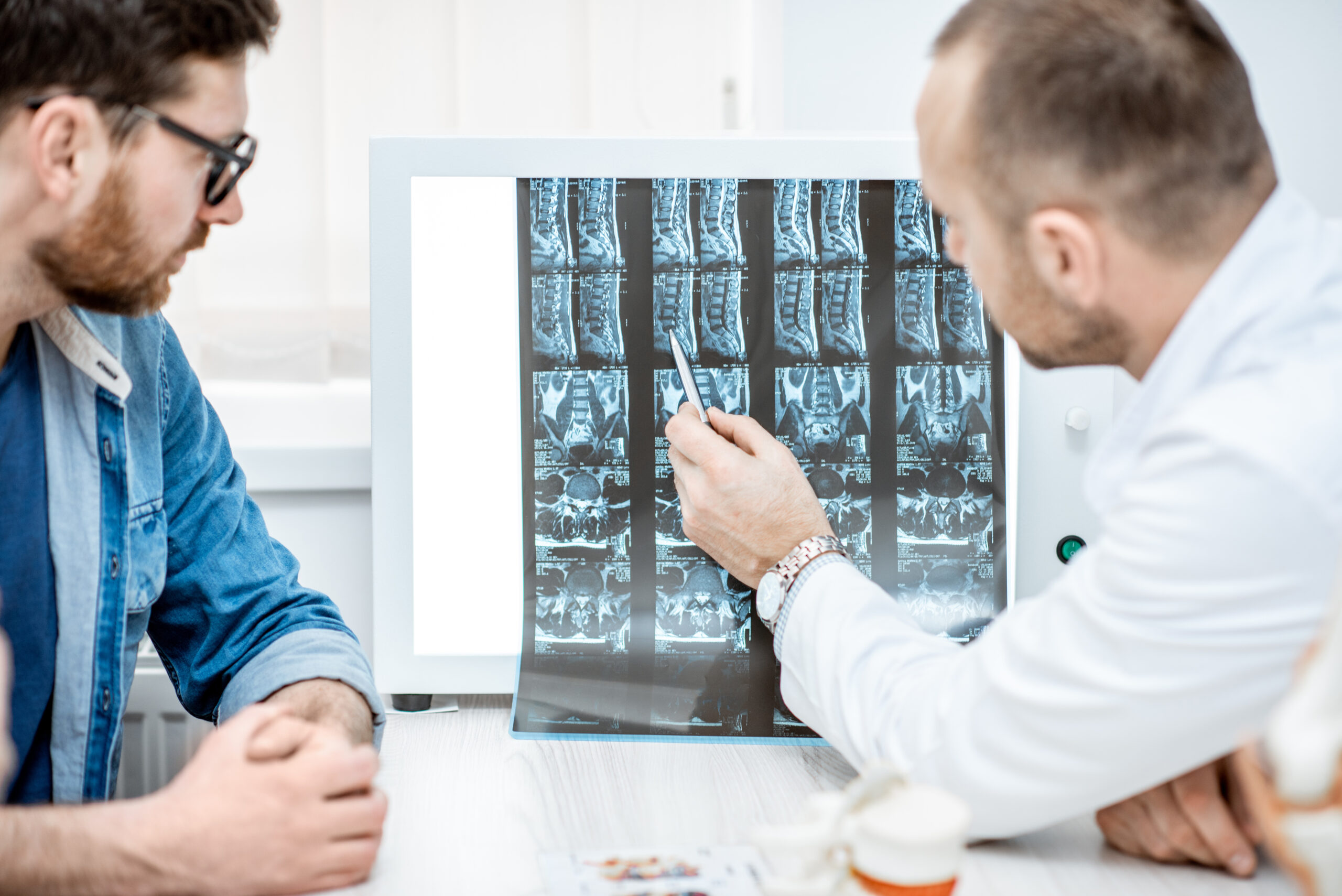
Did you know that your bone density changes as you age? While your bone density is initially lower when you are younger, it starts to increase in your teenage years and peaks around the age of 30 and then starts to decrease again. As you age, this decreasing bone density can become a concern. Fragile bones are more likely to break, which means seemingly minor falls can result in trips to the emergency room.
If you are starting to lose your bone density, you may experience osteopenia – a condition used to describe a lack of minerals in your bones. This is a precursor to osteoporosis, but the two conditions are very different. This article will focus on osteopenia and, in particular, how this condition can affect the spine.
What is Osteopenia of The Spine
Your bones are living parts of your body along with your muscles and organs. Each of your bones absorbs nutrients to remain strong and support your skeletal system. However, as you age, your bones might have a harder time absorbing these nutrients. This is when your bone mineral density (BMD) starts to decrease.
Osteopenia occurs when the body is absorbing bone matter faster than it is producing it. Essentially, your body uses the minerals in your bones before your body can replenish them. As a result, your bones may become weak and brittle, which means they are more prone to breaks, fractures, and other injuries.
Osteopenia of the spine needs to be taken particularly seriously because the vertebrae that support your body also provide a channel for your nervous system. If one of your vertebrae breaks, it could potentially lead to serious nerve damage in your arms, legs, and other parts of your body. Broken vertebrae can also limit your mobility during the recovery process and even after these bones heal. This is why it is so important to diagnose osteopenia and take steps to help patients who have developed this condition.
Symptoms of Osteopenia
Osteopenia is not an easy condition to identify. There are no clear symptoms that immediately point to this disease and your doctor will have to run various tests to confirm the suspected diagnosis. Your doctor will most likely use a bone density test to determine if you have osteopenia. These tests produce a “T-score” which alerts your doctor to potentially low bone density.
A normal patient will have a T-score above -1.0. If your T-score falls between -1.0 and -2.5 then you have low bone density and potentially have osteopenia. A score below -2.5 indicates osteoporosis and a high risk of bone fractures and breaks.
Most people don’t receive bone density testing, which means they need to look for other symptoms if they are worried about osteopenia. A few common symptoms of this disease include:
- Bone breaks and fractures: if you have recently fractured different bones because of unrelated causes, you may have osteopenia. This is particularly true if the fracture came as a surprise based on a lack of serious impact or cause of injury. (For example, falling on the ground results in a bone fracture.)
- Back pain: spinal osteopenia may be the cause of any back pain that you live with. When your spine loses bone density, it cannot support your body. You may be in pain because your spine is under too much pressure.
- Stooped posture: when your spine can no longer support you, your posture may become stooped. You might also experience height loss.
Hearing that you are at high risk of bone fractures sounds scary. While fractures are serious, they aren’t always painful. Many people have bone fractures and don’t even realize it until they meet with a doctor. During your appointment, your doctor may request an x-ray exam to look at your bones if they suspect you have fractures caused by osteopenia.
Causes Of Osteopenia in the Spine
Several causes contribute to osteopenia. Your genetics, lifestyle choices, and medical history can all increase or decrease your chances of developing this condition. Some of these factors are out of your control while there are other steps you can take to reduce the progression of this disease.
Osteopenia is often developed as a result of other conditions. You may be at risk of this disease if you live with or have been through any of the following illnesses:
- Eating disorders: anorexia and bulimia can prevent your body from receiving key nutrients.
Untreated celiac disease: damage to your small intestine can reduce your body’s ability to absorb nutrients. - Overactive thyroid: thyroid medication can also increase your chances of osteopenia.
- Chemotherapy: you may experience reduced bone density because of the radiation.
Additionally, certain medications can also increase your chances of developing osteopenia. You may have a condition unrelated to the ones listed above but still notice increased back pain and reduced bone strength.
Even if you are considered healthy, there are lifestyle factors that can contribute to your risk of osteopenia. People who have a poor diet, don’t exercise (especially strength training), don’t consume enough calcium or vitamin D, and smoke or drink excessively have a higher risk of osteopenia.
Diagnosing Osteopenia in the Spine
If you or your doctor are concerned about osteopenia, they will recommend a bone density test to evaluate your T-score. They may also order a series of x-rays and other tests to look at your spine and check for signs of fracture.
Your doctor will not rush to diagnose osteopenia. Before they order these tests, they will look at potential lifestyle factors that could indicate a lower bone density. A few of these common criteria include:
- Women who are older than 50 (or postmenopausal at any age)
- Men older than 65 who have osteopenia risk factors
- People of all genders over 50 who break bones without significant trauma
- People with sudden back pain or pain that gets worse when walking and moving
- People who are experiencing a loss of height or curvature of the spine.
Bone density tests are painless and they are fast. You do not need to prepare for the test or set aside time for a recovery period. Your doctor will use x-rays to measure the calcium levels and the other minerals present in your bones. From there, they will determine your T-score.
Treatments for Osteopenia in the Spine
If your T-score is low and your doctor is concerned about your bone density, they may start you on a course of treatment for osteopenia. There are multiple ways to reduce the progression of osteopenia, which means your doctor will likely take a multi-faceted approach to build back your bone density.
First, they will recommend various lifestyle changes you can make to improve bone health. These include reducing your alcohol intake, quitting smoking, improving your diet, starting to exercise, and taking vitamins. Depending on your T-score levels, your doctor may give you a list of appropriate exercises that reduce your chance of injury. For example, swimming is a lower-impact exercise than running and may be safer for people with osteopenia.
Next, your doctor may prescribe medication to treat your osteopenia. This treatment will prevent your body from breaking down your bones so you can build back your bone density. These medications can prevent osteopenia or slow its progression. Finally, your doctor may also recommend hormone replacement therapy, which is often used to alleviate menopause symptoms. HRT may prevent bone density loss in female patients.
Every person is unique, which means some medications and treatments might work better than others for your particular body. By taking multiple steps to treat your osteopenia, you can stop the progression of bone density loss.
When to Talk to a Spine Specialist About Osteopenia
If you experience back pain, you need to talk to a spine specialist. Back pain rarely clears up on its own and your symptoms may start to worsen if you ignore them. If you don’t get treatment for back issues when they are mild, they may progress to a point where you cannot work or move comfortably day-to-day.
Your spine is a complex part of your body, and experiencing back pain doesn’t necessarily mean you have osteopenia, so your doctor will look at your lifestyle factors and symptoms to determine if a bone density test is appropriate. If you do not have osteopenia, they will continue working to diagnose the source of your back pain.
Osteopenia doesn’t have to progress to osteoporosis. You can slow your bone density loss and prevent the progression of this disease. However, you need to catch this condition early and take steps to adjust your lifestyle to limit the damage it does to your body. Some people are nervous when visiting the doctor, but diagnosing osteopenia in its early stages is one of the best ways to ensure a full recovery, so i’s worth your time to make an appointment.
Talk to Dr. Lanman About Your Back Pain
If you are living with unexplained back pain, have started to stoop, or have broken a bone unexpectedly in your spine, request a consultation with Dr. Todd H. Lanman, board-certified and award-winning spinal neurosurgeon. Dr. Lanman is the founder of the Advanced Disc Replacement Spinal Restoration Center which operates out of Beverly Hills, Miami, and Palm Beach. As a leading spinal neurologist, Dr. Lanman helps people from all walks of life restore their spinal health, including A-list film stars and C-Suite executives.
You don’t have to live with pain. Catching back problems early is one of the best ways to make sure your treatment and recovery are successful. Request a consultation today to diagnose and treat your osteopenia.
Ready to reclaim your life? Get in touch with Dr. Lanman Today.
FOLLOW US ON SOCIAL MEDIA | @ADRSPINE





